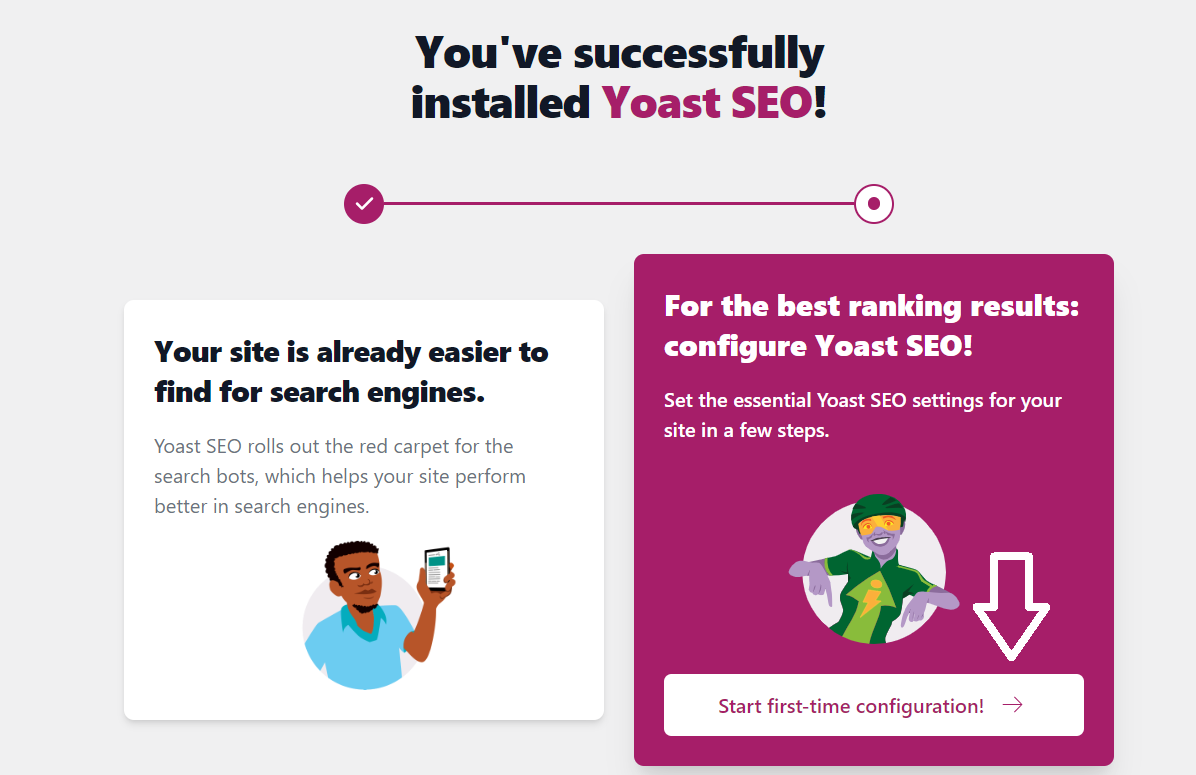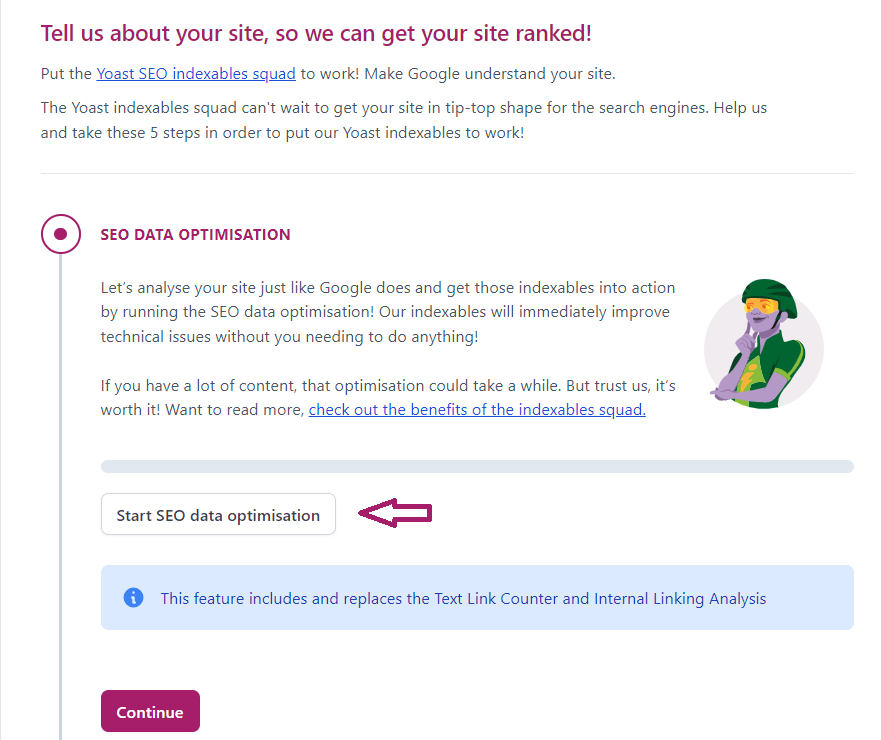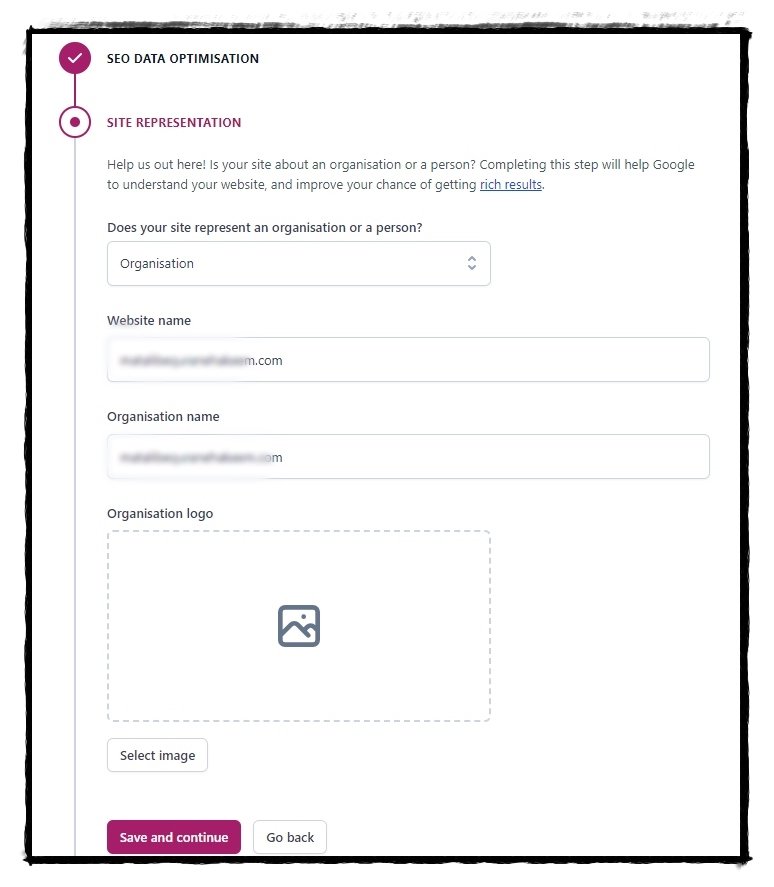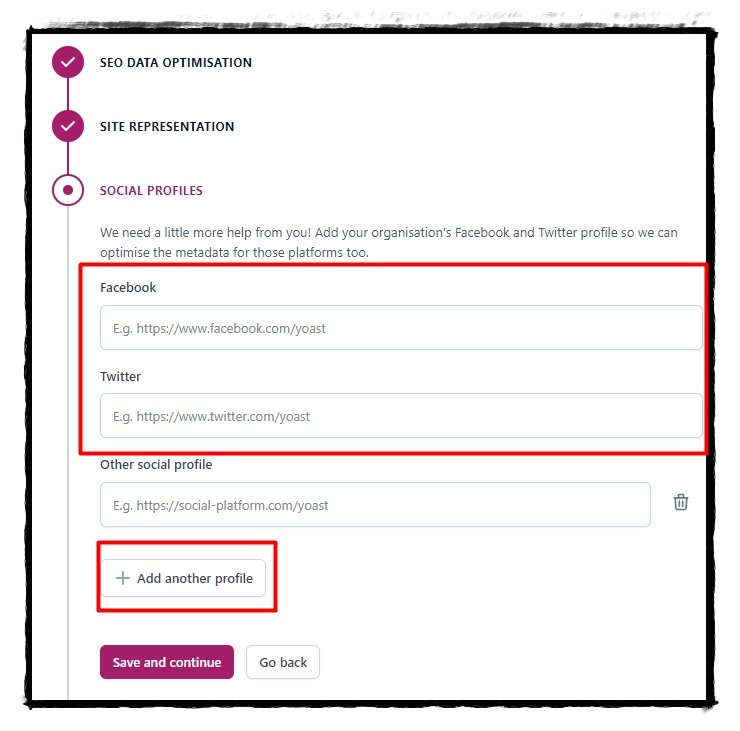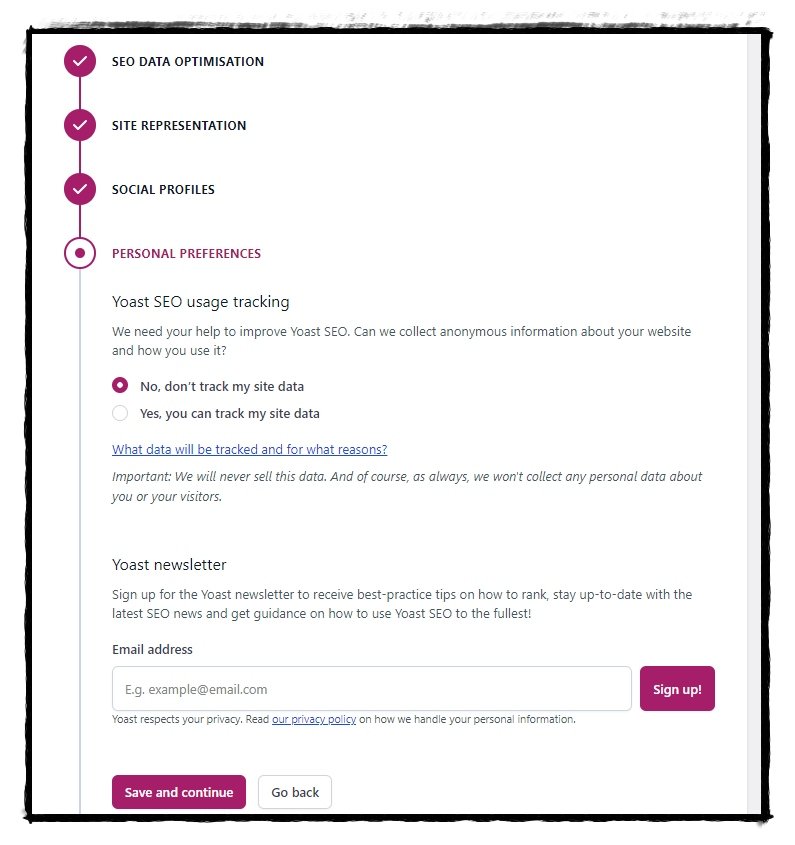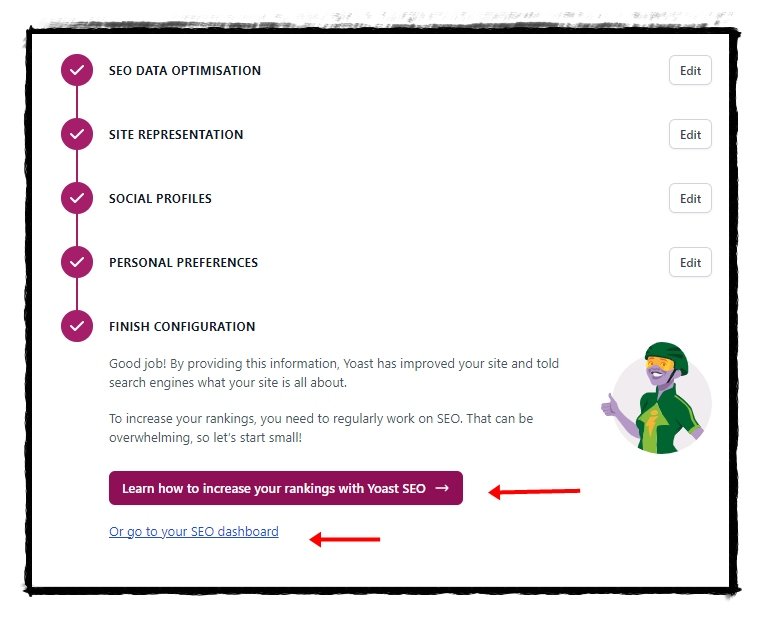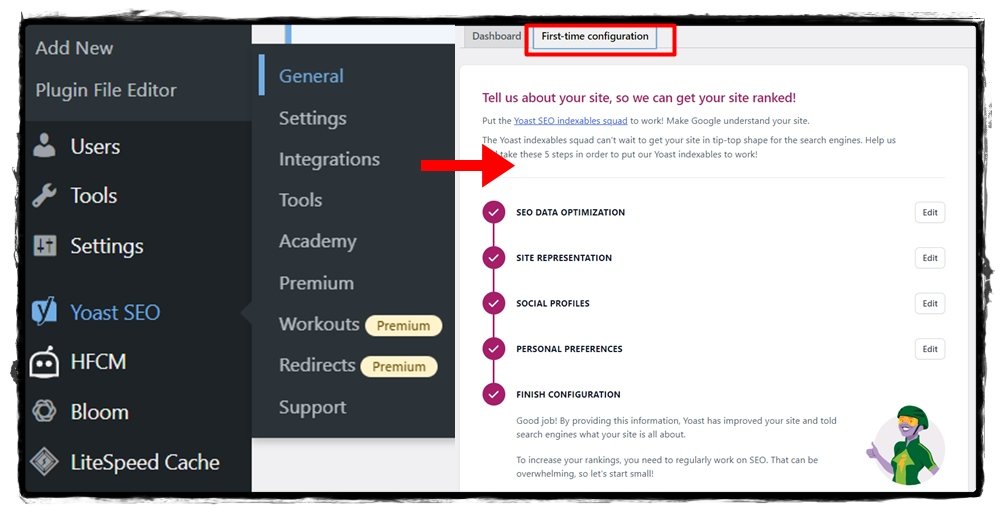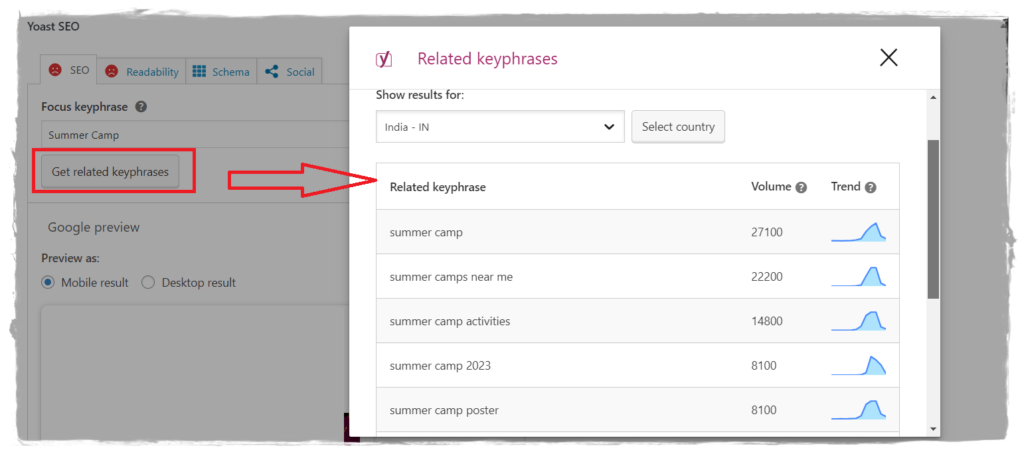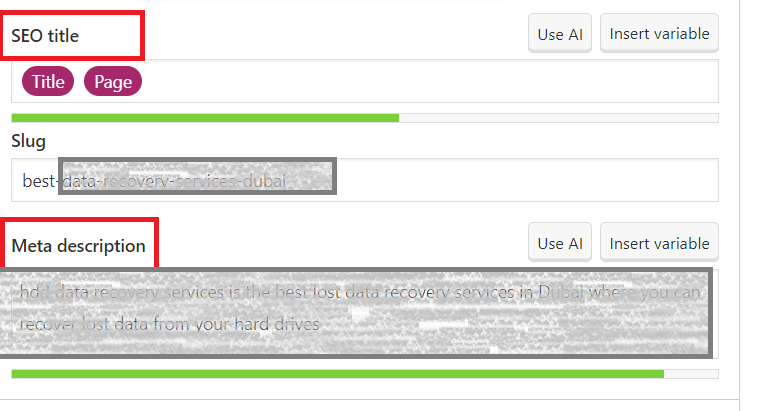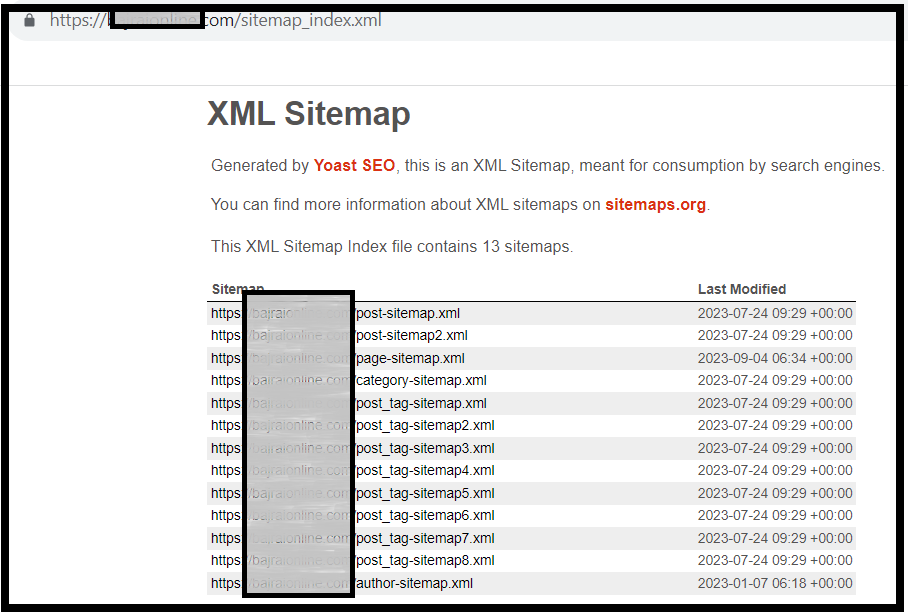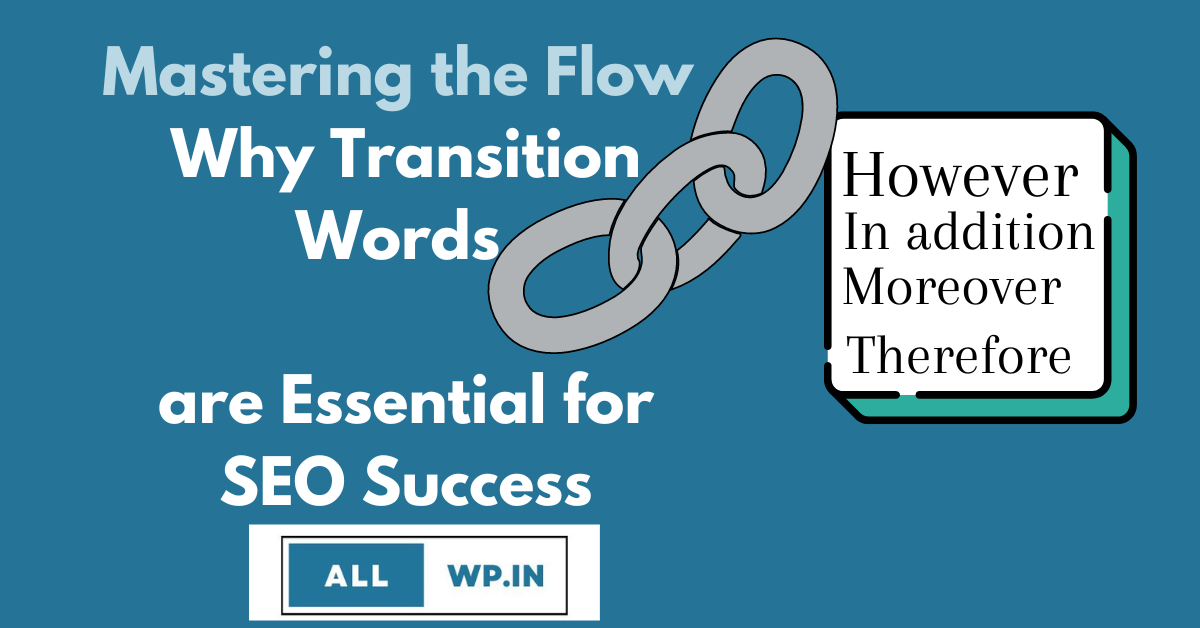
Mastering the Flow: Why Transition Words are Essential for SEO Success
In the world of SEO, keywords, content, and backlinks often take centre stage. But there’s one important element that is often overlooked: transition words. These seemingly small words or phrases play a crucial role in optimizing your website for search engines and enhancing the overall reader experience.
What are Transition Words?
Transition words, also known as signal words or linking words, assist in guiding readers through your content seamlessly. They create a logical flow between sentences and paragraphs, making it easier for search engines to crawl your website and understand its structure.
But why are transition words essential for SEO success? For starters, they improve the readability and comprehension of your content, keeping readers engaged and reducing bounce rates. Additionally, search engines love well-structured content with clear transitions, making it more likely for them to rank your pages higher in search results.
In this article, we dive deep into the world of transition words and explore why they are crucial for your SEO strategy. We’ll uncover the different types of transition words, how to use them effectively, and the impact they can have on your website’s organic visibility. Get ready to master the flow and unlock the true potential of transition words for your SEO success.
The importance of using transition words in SEO
Transition words may seem like an insignificant aspect of SEO, but they can have a significant impact on your website’s performance. One of the key reasons transition words are essential for SEO success is that they improve the readability and comprehension of your content.
When readers encounter a well-structured piece of content with clear transitions, they are more likely to stay engaged and continue reading. On the other hand, if your content lacks smooth transitions, readers may find it confusing or difficult to follow, leading to a higher bounce rate.
How transition words improve readability and user experience
Transition words act as signposts, guiding readers through your content and helping them navigate smoothly from one idea to the next. They establish connections between sentences and paragraphs, making it easier for readers to understand the flow of your thoughts.
For example, words like “however,” “in addition,” and “on the other hand” signal a shift in ideas or provide additional information. These transition words help readers comprehend the relationship between different parts of your content, enhancing their overall reading experience.
Additionally, transition words can make your content more conversational and engaging. They create a sense of rhythm and flow, making your writing more enjoyable to read. When readers have a positive user experience on your website, they are more likely to spend more time on your pages and explore further, increasing the chances of conversions or interactions.
The impact of transition words on search engine rankings
Apart from improving readability and user experience, transition words also play a role in search engine rankings. Search engines like Google value well-structured content that is easy to understand and navigate. When your content utilizes transition words effectively, it becomes more appealing to search engine algorithms.
Clear and logical transitions between sentences and paragraphs make it easier for search engines to crawl your website and understand its structure. This, in turn, helps search engines index your content more accurately, increasing the chances of ranking higher in search results.
Furthermore, transition words can indirectly impact SEO by reducing bounce rates. When readers find your content engaging and easy to read, they are likelier to stay on your website for longer. This extended dwell time sends positive signals to search engines, indicating that your content is valuable and relevant, potentially improving your search engine rankings.
Commonly used transition words for SEO optimization

There are numerous transition words and phrases that you can use to optimize your content for both SEO and reader experience. Here are some commonly used transition words and how they can be applied:
1. However: Use “however” to introduce contrasting ideas or viewpoints. For example, “The product is priced competitively. However, the quality is unparalleled.”
2. In addition: Use “in addition” to provide additional information or examples. For instance, “Our company offers a wide range of services. In addition, we provide personalized customer support.”
3. Moreover: Use “moreover” to add information that strengthens your previous point. For instance, “Our product is durable and cost-effective. Moreover, it comes with a lifetime warranty.”
4. On the other hand: Use “on the other hand” to present an alternative perspective or counterargument. For example, “Some people prefer the convenience of online shopping. On the other hand, others enjoy the experience of browsing physical stores.”
5. Despite: Use “Despite” to demonstrate a contrary result i.e., you expected a different result from the action. For example “Trains are still running, despite the heavy rains”
6. Without a Doubt: Use “Without a doubt” to express confidence. For example: “I can say without a doubt that our team will win the championship this year”
These are just a few examples, and there are numerous other transition words available that can help enhance the flow and structure of your content. You can have details here
How to incorporate transition words in your content
Now that you understand the importance of transition words for SEO, it’s crucial to know how to incorporate them into your content effectively. Here are some tips to help you get started:
1. Plan your content structure: Before writing, create a clear outline of your content. Identify where transitions are needed to ensure a logical flow between paragraphs and ideas.
2. Use transition words sparingly: While transition words are important, it’s essential to use them judiciously. Overusing transition words can make your writing appear unnatural or repetitive. Choose the most appropriate transition words that enhance the readability and flow of your content.
3. Experiment with different transition words: Don’t limit yourself to a few common transition words. Explore various options to find the ones that best suit your writing style and content.
4. Edit and revise: After completing your initial draft, review your content to ensure that the transition words are used effectively. Make any necessary revisions to improve the clarity and coherence of your writing.
Types of Transition Words
Transitional phrases organize the writer’s ideas, convey nuance, make vague ideas clear, create links, and show parallels. Transition words are broken down into eight different groups since they perform such a wide variety of functions.
1. Transition words that introduce, agree, and add on
One of the most frequent uses of transition words is to introduce fresh concepts and expand on subjects that have already been covered in the essay.
In this category are the following transitional words and phrases:
- In Addition
- Further
- Furthermore
- moreover
- likewise
- too
- first
- Second
- Third
- Too
- Uniquely
Examples of “In Addition” Transition Word
- I enjoy playing Cricket. In addition, I love watching Cricket matches on weekends.
- She’s an excellent artist. In addition, she is a talented musician.
Examples of “Further” Transition Word
- We need to analyze the data further to draw meaningful conclusions.
- Further investigation is required to uncover the root cause of the problem
Examples of “Furthermore” Transition Word
- The weather is beautiful, and furthermore, the beach is just a short walk away.
- Furthermore, the company offers generous benefits to its employees.
Examples of “Moreover” Transition Word
- He’s an experienced chef, and moreover, he has a passion for experimenting with new recipes.
- The hotel not only has a great location but moreover, it offers affordable rates.
Examples of “Likewise” Transition Word
- She enjoys hiking, and likewise, Her brother likes to spend time outside a lot.
- The manager set a good example, and likewise, the team followed suit.
Examples of “Too” Transition Word
- I love Italian cuisine, and my friend does too.
- The movie was entertaining, and the book adaptation was too.
Examples of “First, Second, Third” Transition Word
- First, we need to gather all the necessary materials. Second, we’ll prepare the workspace. Third, we can start the project.
- First, he introduced himself. Second, he discussed his qualifications. Third, he explained his interest in the job.
Examples of “Uniquely” Transition Word
- The artist’s work is uniquely expressive, capturing emotions like no other.
- Their approach to problem-solving is uniquely innovative in the industry.
Transition words for Oppose and Limit
Transitional words and phrases can also convey opposition or limits. The function of these terms is substantially the reverse of the function of the category above. Transitional words that establish boundaries and opposition include:
- Unlike
- Conversely
- but
- while
- or
- as much as
- On the other hand
- on the contrary
- despite
- above all
Examples of “Unlike” Transition Word
- Unlike her sister, Amina prefers spending her weekends indoors with a good book.
- Unlike the previous model, the new car comes with advanced safety features.
Examples of “Conversely” Transition Word
- Sarah loves hiking; conversely, her brother prefers staying at home.
- While some people thrive in large cities, others, conversely, find peace in rural areas.
Examples of “but” Transition Word
- He studied hard for the exam, but he still didn’t perform as well as he had hoped.
- The weather was rainy, but they decided to go for a hike anyway.
Examples of “while” Transition Word
- While he enjoys swimming, his best friend prefers jogging.
- While the company faced challenges, it managed to stay profitable.
Examples of “or” Transition Word
- You can choose either the chocolate cake or the vanilla ice cream for dessert.
- Should we go to the park today, or would you prefer a movie night at home?
Examples of “as much as” Transition Word
- As much as I love pizza, I have to watch my diet and choose a healthier option.
- She wanted to travel the world, but as much as she dreamed of it, her job kept her grounded.
Examples of “on the other hand” Transition Word
- Sarah loves the summer weather. On the other hand, Abraham prefers the cosiness of winter.
- The company’s profits are up this quarter. On the other hand, their competitors are struggling.
Examples of “On the contrary:” Transition Word
- Many believed he would fail, but, on the contrary, he succeeded beyond everyone’s expectations.
- The product was expected to be expensive, but, on the contrary, it was quite affordable.
Examples of “Despite” Transition Word
- Despite the heavy rain, the football match continued as scheduled.
- He managed to stay positive despite facing numerous challenges in his career.
Examples of “Above all” Transition Word
- Above all, prioritize safety when working with heavy machinery.
- In this project, meeting the deadline is important, but above all, quality cannot be compromised.
Cause and conditional transition words
These transition words demonstrate how one action resulted in a specific impact or how one circumstance is dependent on another. Words and transition phrases that demonstrate the relationship between an intention and an action are also included in this category.
Cause and conditional transition words include:
- since
- while
- whenever
- due to
- In case
- Unless
- So that
- in the event of
- for fear of
- because of
- as long as
- I hope that
Examples of “since” Transition Word
- Since I arrived early, I decided to grab a coffee at the café.
- Farhan has been a loyal customer since the store first opened.
Examples of “while” Transition Word
- While I was cooking dinner, I listened to my favourite podcast.
- He studied for the exam while his roommate watched TV.
Examples of “whenever” Transition Word
- Whenever it rains, I like to stay indoors and read.
- I’ll be there whenever you need assistance with your project.
Examples of “due to” Transition Word
- The flight was delayed due to bad weather conditions.
- We had to cancel the picnic due to a sudden emergency.
Examples of “in case” Transition Word
- Take an umbrella with you in case it starts raining.
- I always carry my power bank in case my battery dies.
Examples of “unless” Transition Word
- You won’t pass the exam unless you study consistently.
- We’ll be late unless we leave for the airport now.
Examples of “so that” Transition Word
- I turned off the lights so that we could save energy.
- He wrote a note so that his friend wouldn’t forget the meeting time
Examples of “In the event of” Transition Word
- In the event of a fire, please use the nearest exit.
- We have a backup generator in the event of a power outage
Examples of “For Fear of” Transition Word
- She avoided swimming in the lake for fear of encountering snakes.
- He locked all the windows at night for fear of intruders.
Examples of “because of” Transition Word
- The event was cancelled because of the ongoing pandemic.
- They had to change their plans because of the sudden snowstorm.
Examples of “as long as” Transition Word
- You can borrow my car as long as you return it by 7 PM.
- You’re welcome to use the study room as long as you maintain silence.
Examples of “I Hope that” Transition Word
- I hope that you have a great time at the party.
- I hope that we can meet up for lunch soon.
Effect and result transition words
Similar to the previous category, these transitional phrases show the outcome of a certain activity. The two are different in the following ways: You would use one of the transition words from the “Cause and conditional” group above when your phrase is focused on the cause of the effect. You would use a word from this “Effect and result” category that goes with the rest of your statement when the emphasis is on the effect itself.
Words and phrases in this category include:
- Therefore
- Then
- Hence
- In effect
- As a result
- henceforth
- Because the
- Consequently
- Under those circumstances
Examples of “therefore” Transition Word
- He forgot her umbrella, therefore, he got soaked in the rain.
- The store was closed, therefore, we had to find another place to shop.
Examples of “then” Transition Word
- We finished dinner, then we went for a walk in the park.
- She studied hard, then she aced the exam.
Examples of “hence” Transition Word
- It started snowing heavily, hence, we had to postpone our trip.
- The prices of gas have increased, hence, the cost of living is going up.
Examples of “in effect” Transition Word
- The new policy, in effect, requires all employees to attend a safety training workshop.
- The law, in effect, prohibits smoking in public places
Examples of “as a result” Transition Word
- He missed his flight, and as a result, he had to book a later one.
- The team worked together efficiently, and as a result, they completed the project ahead of schedule.
Examples of “henceforth” Transition Word
- The company announced a new dress code policy, and henceforth, all employees must adhere to it.
- He made a resolution to exercise regularly, and henceforth, he stuck to his fitness routine.
Examples of “because the” Transition Word
- Because the traffic was heavy, she arrived late to the meeting.
- Because the restaurant was crowded, we had to wait for a table
Examples of “consequently” Transition Word
- They didn’t prepare well for the presentation, and consequently, it didn’t go as planned.
- The market crashed, and consequently, many investors suffered losses.
Examples of “Under those circumstances” Transition Word
- Under those circumstances, I had no choice but to decline the job offer.
- The weather forecast predicted a storm, so under those circumstances, we decided to stay indoors.
Transition words that describe examples and support
Other transitional words demonstrate how one idea supports another, either by giving examples, underscoring it, or both. These words consist of:
- Indeed
- In fact
- In other words
- Particularly
- Notably
- Especially
- For this reason
- Explicitly
- To clarify
- By all means
- In general
Examples of “indeed” Transition Word
- The weather forecast predicted rain, and indeed, it started pouring.
- He is, indeed, one of the most talented cricketers I’ve ever seen.
Examples of “in fact” Transition Word
- I thought it would be a difficult task, but in fact, it was quite simple.
- He wasn’t just a good student; in fact, he graduated with honors.
Examples of “in other words” Transition Word
- He’s a workaholic, in other words, he spends most of his time at the office.
- She loves outdoor activities, like hiking and camping. In other words, she’s an adventurer.
Examples of “notably” Transition Word
- The scientist’s research has notably advanced our understanding of the topic.
- His speech was notably inspiring, leaving a lasting impression on the audience.
Examples of “especially” Transition Word
- I love all animals, especially cats.
- He enjoys travelling, especially to exotic destinations.
Examples of “for this reason” Transition Word
- He is allergic to dairy products, and for this reason, he avoids ice cream and cheese.
- The store is closed today for maintenance; for this reason, we need to find another place to shop.
Examples of “explicitly” Transition Word
- The instructions explicitly state that the product should not be exposed to extreme temperatures.
- She explicitly told him not to share her personal information.
Examples of “to clarify” Transition Word
- To clarify, the meeting will take place at 3 PM in Conference Room B.
- Let me explain it again to clarify any confusion
Examples of “By All Means” Transition Word
- If you have any questions, by all means, feel free to ask.
- She wanted to join the team, and by all means, she was qualified for the position.
Examples of “in general” Transition Word
- In general, people tend to be more active during the summer.
- The guidelines apply to everyone in the company, in general, not just a specific department.
Conclusion and summary transition words
These are the Transition words that conclude sentences, arguments, and writing works. They can also be used to reiterate and summarize concepts. These transitional expressions and terms consist of
- Altogether
- To summarise
- In conclusion
- in summary
- to conclude
- in any event
- in either case
- overall
- in essence
- to sum up
Examples of “altogether” Transition Word
- Altogether, it was a memorable vacation with my family.
- The project was a success, thanks to our teamwork and dedication, altogether.
Examples of “to summarize” Transition Word
- To summarize the main points of the presentation, the key takeaways are…
- To summarize, our company achieved record sales this quarter.
Examples of “in conclusion” Transition Word
- In conclusion, I believe that we should prioritize environmental conservation.
- In conclusion, his argument was compelling and well-researched.
Examples of “in summary” Transition Word
- In summary, the new policy aims to improve customer satisfaction and streamline operations.
- The report, in summary, highlights the major findings of our research.
Examples of “to conclude” Transition Word
- To conclude, I’d like to thank everyone for their hard work on this project.
- To conclude, our efforts to reduce waste have had a positive impact on the environment.
Examples of “in any event” Transition Word
- In any event, we’ll need to make a decision by the end of the week.
- I’ll be there on time, in any event, whether it rains or not.
Examples of “in either case” Transition Word
- You can choose the red or blue shirt; in either case, they both look great on you.
- In either case, the outcome will depend on how well we prepare for the interview.
Examples of “overall” Transition Word
- Overall, the feedback from our customers has been positive.
- The trip was fantastic, and overall, everyone had a great time.
Examples of “in essence” Transition Word
- In essence, the project’s success hinges on effective communication.
- His argument, in essence, boils down to the need for better education.
Examples of “to sum up” Transition Word
- To sum up, we need to address the issue of climate change urgently.
- To sum up, the main goal is to provide excellent customer service and satisfaction.
Transition words for describing time
When something occurs or will occur in relation to another event is covered by a different group of transition words. These words consist of:
- Now
- presently
- once
- occasionally
- after
- in the meantime
- in a moment
- momentarily
- at the present time
- all of a sudden
- every so often
Examples of “now” Transition Word
- I’m having lunch now, so I can’t talk at the moment.
- Now that the rain has stopped, we can go for a walk.
Examples of “presently” Transition Word
- She’s working on a report presently and will join the meeting afterwards.
- Presently, I’m studying for my final exams, so I can’t go out tonight.
Examples of “occasionally” Transition Word
- She occasionally goes to the gym to stay in shape.
- Occasionally, I treat myself to a piece of chocolate.
Examples of “once” Transition Word
- Once the clock strikes twelve, it will be time to celebrate the new year.
- Once you finish your chores, you can go play outside.
Examples of “after” Transition Word
- After finishing her homework, she went to the park with her friends.
- After the rain stopped, we went for a walk in the fresh air.
Examples of “while” Transition Word
- I’ll be at work, but in the meantime, you can reach me on my cell phone.
- In the meantime, while the food is cooking, you can set the table.
Examples of “in a moment” Transition Word
- I’ll be with you in a moment; I just need to grab my coat.
- In a moment, I’ll send you the email with the information you requested.
Examples of “momentarily” Transition Word
- The bus will arrive momentarily, so please have your tickets ready.
- She’ll be back momentarily; she just went to grab some groceries.
Examples of “at the present time” Transition Word
- At the present time, our company is experiencing significant growth.
- At the present time, I am unable to take on any additional projects.
Examples of “all of a sudden” Transition Word
- All of a sudden, the power went out, plunging the room into darkness.
- He left the room all of a sudden, without saying a word
Examples of “every so often” Transition Word
- Every so often, we like to go on a weekend getaway to relax.
- She checks her email every so often to stay updated on work matters.
Transition words for locations
Transitional words can also be used to highlight a reader’s location or the geographical or physical relationship between two items. This expression can be used metaphorically or literally.
- beside
- over
- where
- in front of
- behind
- next to
- under
- beyond
- amid
- among
- opposite
- adjacent to
- above
- below
Examples of “beside” Transition Word
- I parked my car beside yours in the parking lot.
- He sat beside me during the entire movie.
Examples of “over” Transition Word
- The bridge goes over the river, providing a stunning view.
- I placed a towel over the chair to protect it from the rain.
Examples of “where” Transition Word
- The park is where we used to have picnics as children.
- Can you tell me where the nearest gas station is?
Examples of “in front of” Transition Word
- The cat is lying in front of the fireplace to stay warm.
- Please stand in front of the class and give your presentation.
Examples of “behind” Transition Word
- He left her keys behind on the kitchen counter.
- The car behind us is honking impatiently.
Examples of “next to” Transition Word
- The grocery store is conveniently located next to the post office.
- I prefer to sit next to the window when I’m on an aeroplane.
Examples of “under” Transition Word
- The cat likes to hide under the bed when it’s scared.
- You’ll find the spare blankets under the storage bin.
Examples of “beyond” Transition Word
- The forest stretches beyond the horizon, offering endless hiking trails.
- His kindness goes beyond what words can express.
Examples of “amid” Transition Word
- Amid the bustling city streets, there’s a peaceful park.
- She found her voice amid the chaos of the protest.
Examples of “among” Transition Word
- She was the tallest among her siblings.
- Among the various options, he chose the red shirt.
Examples of “opposite” Transition Word
- The bank is located opposite the shopping mall.
- My office is on the opposite side of the building.
Examples of “adjacent to” Transition Word
- The library is adjacent to the school, making it easy for students to access.
- The hotel is adjacent to the convention center, perfect for conference attendees.
Examples of “above” Transition Word
- The aeroplane soared above the clouds.
- Hang the painting above the sofa for a decorative touch.
Examples of “below” Transition Word
- The treasure chest was buried below the old oak tree.
- The answer is on the page below this one in the textbook.
Best practices for using transition words in SEO
While using transition words can greatly enhance your content, there are some best practices to keep in mind:
1. Write for humans, not just search engines: While transition words can improve SEO, it’s important to prioritize the user experience. Ensure that your content flows naturally and doesn’t feel forced or overly optimized.
2. Maintain consistency: Choose a consistent style and tone for your transition words throughout your content. This helps maintain a cohesive reading experience for your audience.
3. Consider the context: Transition words should be used in a way that makes sense within the context of your content. Avoid using transition words that don’t contribute meaningfully to the flow or understanding of your writing.
Tools and resources for finding and using transition words
If you’re looking to expand your repertoire of transition words or need assistance in finding the right ones for your content, there are several tools and resources available:
1. Thesaurus: Online thesauruses can provide alternative transition words and synonyms to expand your vocabulary.
2. Grammarly: Grammarly is a popular writing assistant tool that provides suggestions for enhancing your writing, including the appropriate use of transition words.
3. Style guides: Consult style guides like the AP Stylebook or The Chicago Manual of Style for guidance on using transition words in a professional and consistent manner.
Case studies showcasing the positive impact of transition words on SEO
To further emphasize the significance of transition words in SEO, here are a few case studies that demonstrate their positive impact:
1. Case Study 1 – Company Blog: A company implemented the use of transition words in their blog articles and saw a significant increase in engagement metrics such as time spent on a page, lower bounce rates, and increased social shares.
2. Case Study 2 – E-commerce Website: An e-commerce website optimized its product descriptions with well-placed transition words, resulting in improved organic rankings and increased conversions.
These case studies highlight the tangible benefits of incorporating transition words into your SEO strategy and underline their potential impact on overall website performance.
Conclusion and final thoughts on mastering the flow with transition words for SEO success
Transition words may seem small, but their impact on SEO success cannot be underestimated. By improving readability, user experience, and search engine rankings, transition words play a vital role in optimizing your content for both search engines and human readers.
Mastering the flow with transition words requires practice and a keen understanding of how they contribute to the overall structure and coherence of your content. By incorporating transition words effectively, you can create a seamless reading experience, keep readers engaged, and increase your chances of ranking higher in search results.
So, next time you embark on an SEO journey, remember to pay attention to the small but mighty transition words that have the power to elevate your content and unlock its true potential.

